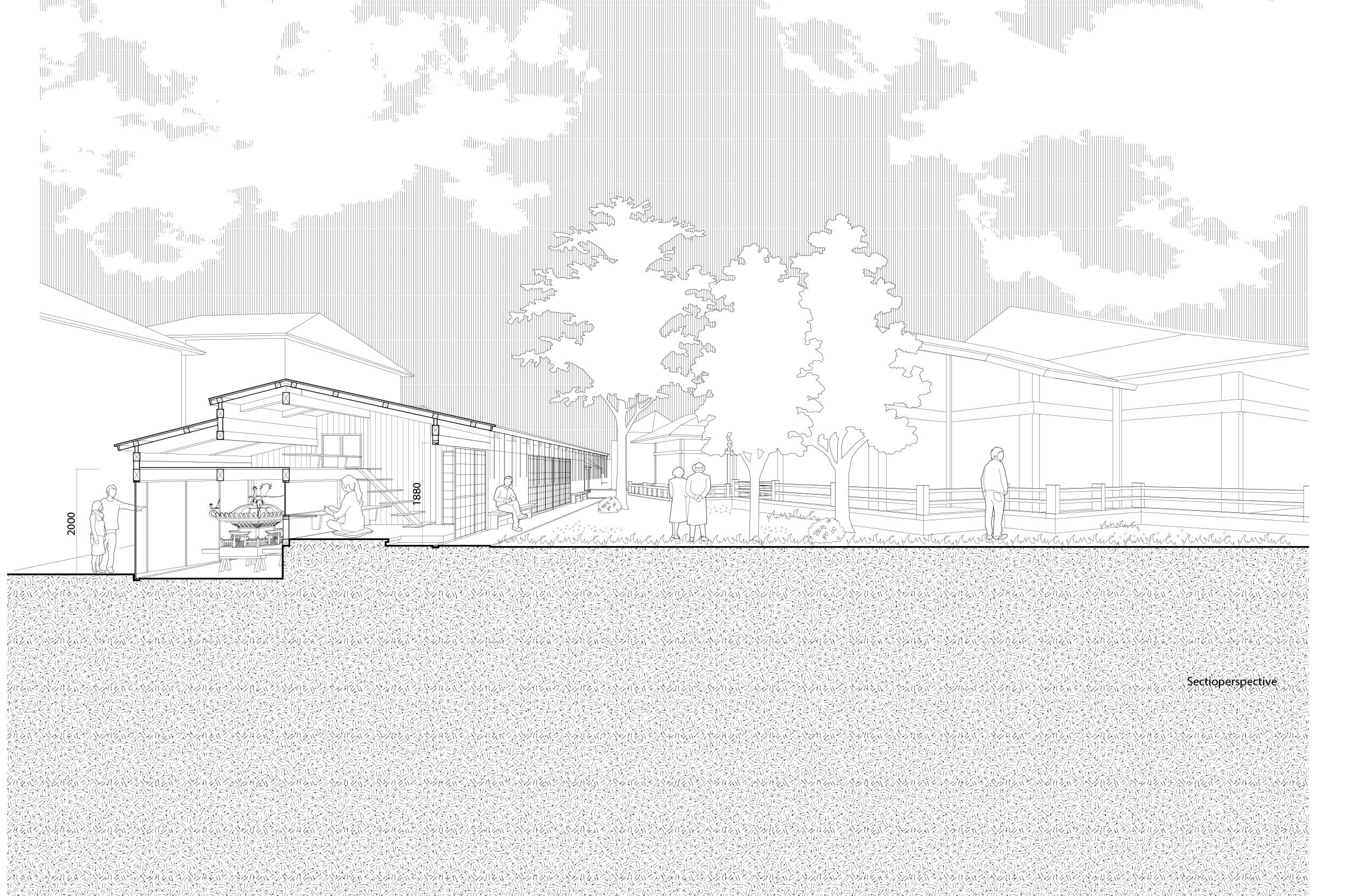SHRINNE HOTEL
In Japan, there is a religious space as an open space that is closely related to the lives of ur- ban citizens. Not only during the festival, but it is also a space like a public square where nearby people gather in daily life.
The annual festival is the most important ritual held annually at shrines. The annual festival is held once a year, often on a day that people can gather this public space.
at th same time, A mikoshi is a sacred reli- gious palanquin (also translated as a portable Shinto shrine). Shinto followers believe that it serves as the vehicle to transport a deity in Japan while moving between the main shrine and temporary shrine during a festival or when moving to a new shrine. Often, the mikoshi resembles a miniature building, with pillars, walls, a roof, a veranda, and a railing.
During a matsuri (Japanese festival) involving a mikoshi, people bear the mikoshi on their shoulders by means of two, four (or some- times, rarely, six) poles. They bring the mikoshi from the shrine, carry it around the neighbor- hoods that worship at the shrine, and in many cases leave it in a designate.
Student: Shiqiu Liang
Mosquito Net
The primary and original goal of a mosquito net, or amido in Japanese, is to keep out insects, to protect the interior of the house from undesired outside intruders. As such it is a useful boundary device that complements other similar types, such as the screen or the wall, while still letting in light or air. Yet as the lightest and most transparent of barrier mechanisms, the mosquito net also allows a series of non-intended interactions, emotional as well as physical, ranging from the gentle to the aggressive: allowing the observer to see without being seen, allowing a nasty mosquito to bite without encroaching. Much more than a simple boundary, the mosquito net is a lively interface.
